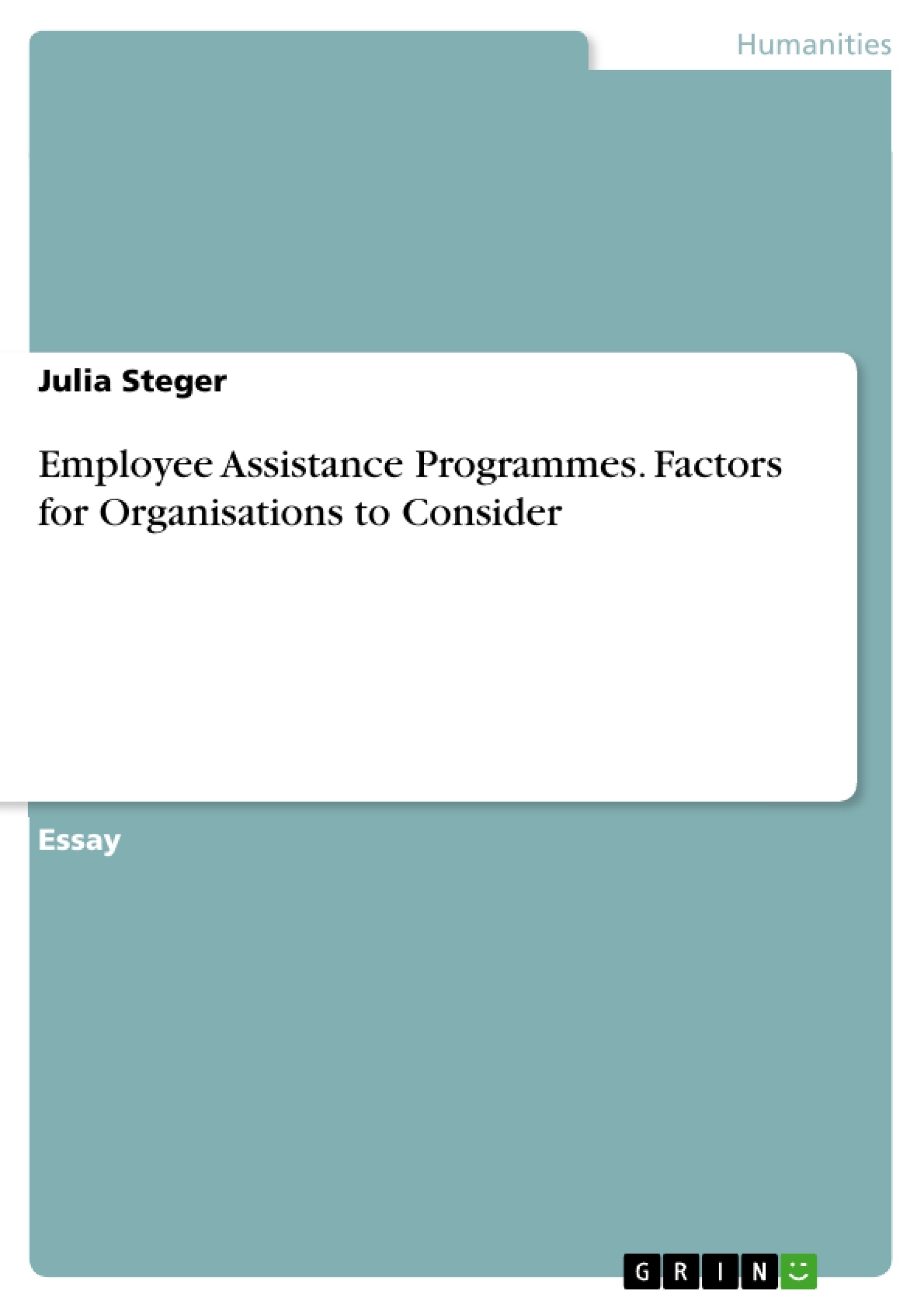An Employee Assistance Programme (EAP) is a service that companies can make use of to provide information and support to their employees to help solve a variety of personal and work-related issues that may affect work and therefore their performance. This paper describes the benefits, costs and outcomes of an EAP, the lack of valid research underpinning its efficiency and the factors that organisations need to consider when introducing an EAP.
It is unequivocal that work has a big influence on employees. Unfortunately, this influence can both be positive and negative (Teasdale, 2006). To help prevent and limit any effects that might reduce performance or have other undesirable impacts on the employees and the business, a company can offer various services for employees to handle stress and other psychological disturbances. Companies can therefore implement some kind of workplace counselling, which offers a confidential place to speak about issues with a trained therapist.
One type of counselling is the Employee Assistance Programme (EAP), a strategic service for employers to provide support to their workforce.
First, this paper is going to explain what an EAP exactly is and what services are offered.
Then the benefits and reasons for implementing an EAP will be shown. Afterwards, the costs and possible doubts are described and brought into relation with the advantages in order to show if the model is useful and worth its costs. Finally, a guideline for factors to consider when implementing an EAP is given.
Inhaltsverzeichnis (Table of Contents)
- Abstract
- Introduction
- What is an EAP?
- Benefits of an EAP
- Costs and Doubts of an EAP
- Factors to Consider When Implementing an EAP
- Conclusion
Zielsetzung und Themenschwerpunkte (Objectives and Key Themes)
This paper explores the benefits, costs, and outcomes of Employee Assistance Programmes (EAPs) in the workplace. It examines the factors organizations should consider when introducing an EAP, highlighting the need for sound research and a holistic approach to employee well-being.
- The benefits and drawbacks of EAPs in relation to employee well-being and organizational performance.
- The cost-effectiveness of EAPs and the challenges in measuring their impact.
- The importance of a holistic approach to workplace stress management, including organizational interventions.
- The need for robust research to evaluate the effectiveness of EAPs and workplace counselling.
- Factors to consider when implementing an EAP, including internal vs. external counselling and company culture.
Zusammenfassung der Kapitel (Chapter Summaries)
The paper begins by defining EAPs and outlining their services. It then explores the benefits of implementing an EAP, including improved employee well-being, reduced absenteeism, and enhanced organizational image. The paper subsequently examines the costs associated with EAPs and the challenges in measuring their cost-effectiveness. It highlights the need for rigorous research to evaluate the true impact of EAPs.
The paper concludes by providing a guideline for organizations considering implementing an EAP. It emphasizes the importance of conducting a stress audit to assess the current situation and determine the appropriate type of counselling. The paper also suggests considering factors such as internal vs. external counselling and company culture when selecting an EAP provider.
Schlüsselwörter (Keywords)
Employee Assistance Programme, Counselling, Workplace Stress, Cost-Effectiveness, Holistic Approach, Research, Organizational Interventions, Company Culture.
- Quote paper
- Julia Steger (Author), 2015, Employee Assistance Programmes. Factors for Organisations to Consider, Munich, GRIN Verlag, https://www.hausarbeiten.de/document/301542


